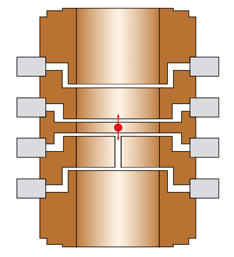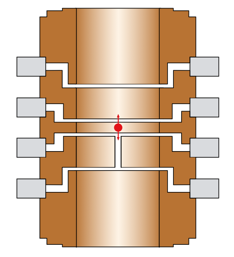QED passes with flying colors
An important early test of quantum electrodynamics (QED)—the theory that quantizes the interaction of light and matter—was predicting the gyromagnetic ratio ( factor) of a free electron. Now, with a precise measurement of the factor of an electron in a hydrogenlike orbit around the silicon nucleus, scientists in Germany report in Physical Review Letters the most stringent test to date of QED applied to a bound particle.
The factor is a dimensionless ratio that relates a particle’s magnetic moment in a field to its spin or orbital angular momentum. According to QED, an electron bound to an atom has a factor that deviates from a value close to by terms that depend on the ion’s nuclear charge and the fine structure constant ( ). The lowest-order corrections have been confirmed in lighter elements, like carbon and oxygen. To see higher-order effects of QED, Sven Sturm at the Max-Planck-Institute for Nuclear Physics in Heidelberg, Germany, and colleagues used a sequence of three magnetoelectric (Penning) traps to strip away all but one of silicon’s fourteen electrons and measured the ratio of the spin precession frequency of the remaining electron and the cyclotron frequency of the ion.
The team established the bound electron’s factor to an unprecedented certainty—enough to see QED contributions of less than a tenth of a millionth of a percent. – Jessica Thomas





